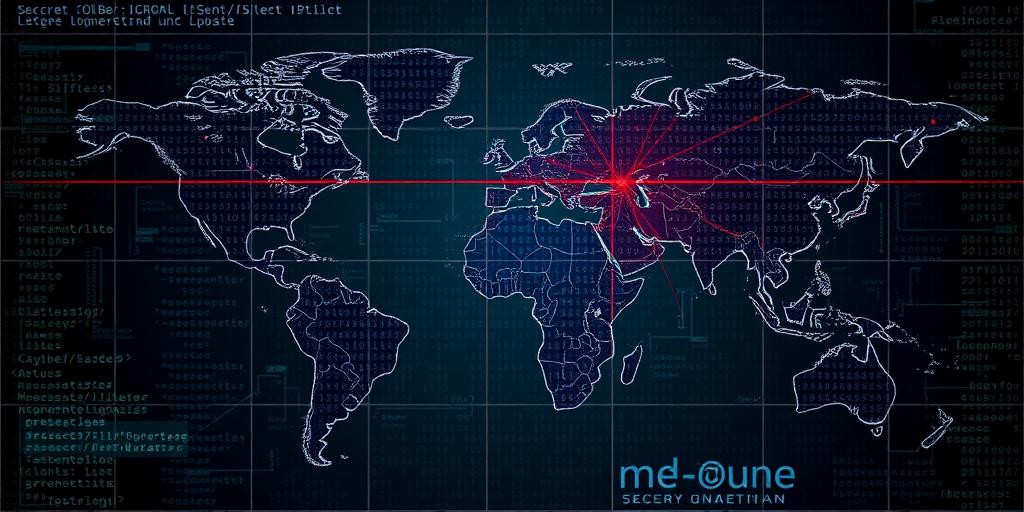Cyberattacks as a Tool of Conflict
In today's interconnected world, cyberattacks have emerged as a potent tool of conflict, blurring the lines between traditional warfare and digital espionage. Nation-states, terrorist groups, and criminal organizations are increasingly leveraging cyberattacks to achieve strategic, political, and economic objectives. This article explores the multifaceted nature of cyberattacks as a tool of conflict, examining their various forms, motivations, and implications for international security.
Types of Cyberattacks Used in Conflict
Cyberattacks employed in conflict can take various forms, each designed to inflict specific types of damage or disruption:
- Data Breaches: Gaining unauthorized access to sensitive information, such as government secrets, military plans, or personal data, can provide valuable intelligence or undermine trust in institutions.
- Disinformation Campaigns: Spreading false or misleading information through social media and other online platforms can manipulate public opinion, incite unrest, or undermine electoral processes.
- Infrastructure Attacks: Targeting critical infrastructure, such as power grids, water supplies, or transportation systems, can cause widespread chaos and disruption, potentially crippling a nation's ability to function.
- Denial-of-Service (DoS) Attacks: Overwhelming a target system with traffic, rendering it unavailable to legitimate users, can disrupt essential services and communication networks.
- Malware and Ransomware Attacks: Infecting computer systems with malicious software can steal data, encrypt files, or disable critical functions, causing significant financial and operational damage.
Motivations for Using Cyberattacks in Conflict
The motivations behind using cyberattacks as a tool of conflict are diverse and often intertwined:
- Espionage: Gathering intelligence on adversaries, including their military capabilities, political strategies, and economic activities, can provide a significant advantage in international relations.
- Sabotage: Disrupting or destroying critical infrastructure or government systems can weaken an adversary's ability to wage war or govern effectively.
- Political Influence: Manipulating public opinion, interfering in elections, or undermining trust in institutions can destabilize governments and advance specific political agendas.
- Economic Gain: Stealing intellectual property, disrupting financial markets, or extorting money from businesses and governments can generate significant financial rewards.
- Coercion: Using cyberattacks to pressure adversaries into making concessions or changing their behavior can be a powerful tool in international negotiations.
Implications for International Security
The increasing use of cyberattacks as a tool of conflict has profound implications for international security:
- Erosion of Deterrence: The anonymity and deniability associated with cyberattacks make it difficult to deter potential aggressors, as they can often avoid attribution and retaliation.
- Escalation Risks: Cyberattacks can escalate conflicts rapidly, as they can be launched quickly and across borders, potentially triggering a conventional military response.
- Blurred Lines Between War and Peace: Cyberattacks can be used in peacetime to undermine adversaries, blurring the lines between traditional warfare and covert operations.
- Challenges to International Law: The existing international legal framework struggles to address the unique challenges posed by cyberattacks, leading to uncertainty about permissible and prohibited behavior in cyberspace.
- Increased Vulnerability of Critical Infrastructure: The growing reliance on digital technologies makes critical infrastructure more vulnerable to cyberattacks, potentially leading to widespread disruption and damage.
Conclusion
Cyberattacks have become an integral part of modern conflict, offering a potent tool for espionage, sabotage, political influence, economic gain, and coercion. The increasing use of cyberattacks poses significant challenges to international security, eroding deterrence, escalating conflicts, blurring the lines between war and peace, and challenging the existing international legal framework. As the world becomes increasingly interconnected, it is crucial to develop effective strategies for deterring, defending against, and responding to cyberattacks to mitigate their potential impact on international stability and security.









